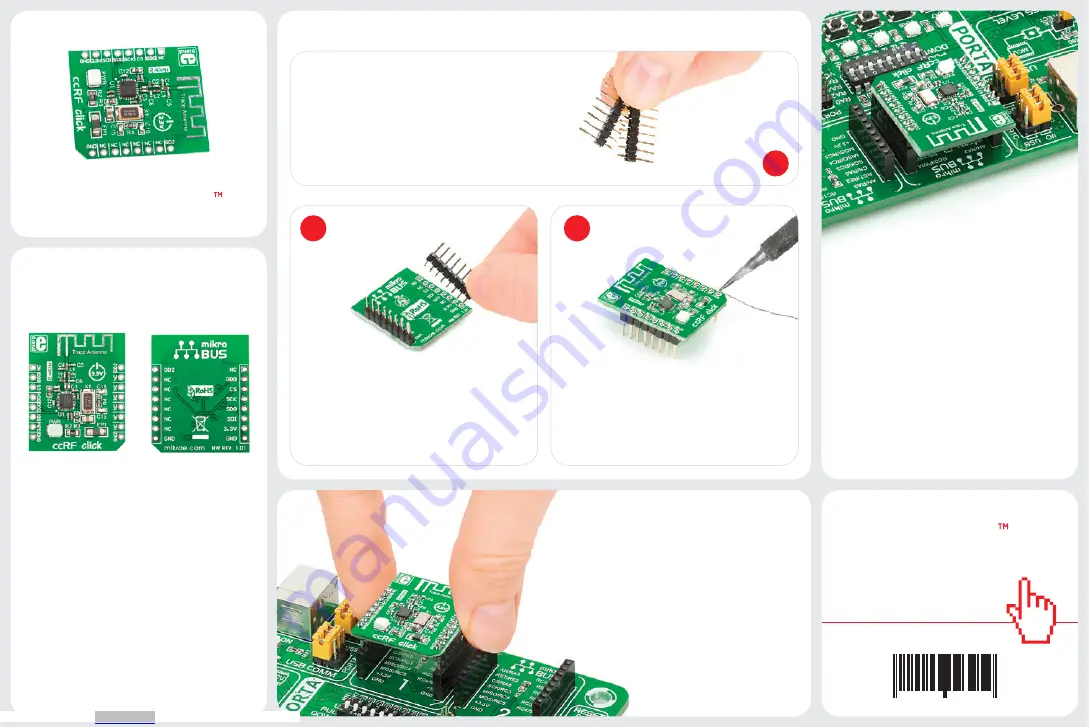
1. Introduction
Once you have soldered the headers your
board is ready to be placed into desired
mikroBUS
™
socket. Make sure to align the
cut in the lower-right part of the board
with the markings on the silkscreen at
the mikroBUS
™
socket. If all of the pins are
aligned correctly, push the board all
the way into the socket.
3. Plugging the board in
2
3
2. Soldering the headers
1
4. Essential features
Turn the board upward again. Make sure
to align the headers so that they are
perpendicular to the board, then solder the
pins carefully.
Turn the board upside down so that
bottom side is facing you upwards.
Place shorter pins of the header into the
appropriate soldering pads.
Before using your click
™
board, make sure
to solder 1x8 male headers to both left
and right side of the board. Two 1x8 male
headers are included with the board in
the package.
click
BOARD
www.mikroe.com
ccRF click Manual
ver. 1.01
0 100000 023952
ccRF click
™
is an accessory board in
mikroBUS
™
form factor. It’s a compact and
easy solution for adding RF transceiver to
your design. It features
CC2500
Low-Power
2.4 GHz RF transceiver as well as PCB
trace antenna. ccRF click
™
communicates
with the target board microcontroller via
mikroBUS
™
SPI (MOSI, MISO, SCK, CS), RST
and PWM lines. The board is designed to
use 3.3V power supply only. LED diode
(GREEN) indicates the presence of power
supply.
ccRF
click
ccRF click
™
with it’s
CC2500
IC is a low-power
2.4 GHz transceiver designed for the 2400-
2483.5 MHz ISM and SRD frequency band.
The
CC2500
is integrated with a highly
configurable baseband modem that supports
various modulation formats and has data rate
up to 500 kBaud. All these features make
this board ideal for consumer electronics,
wireless audio, wireless keyboard and mouse
RF remote controls and many more.
Downloaded from


